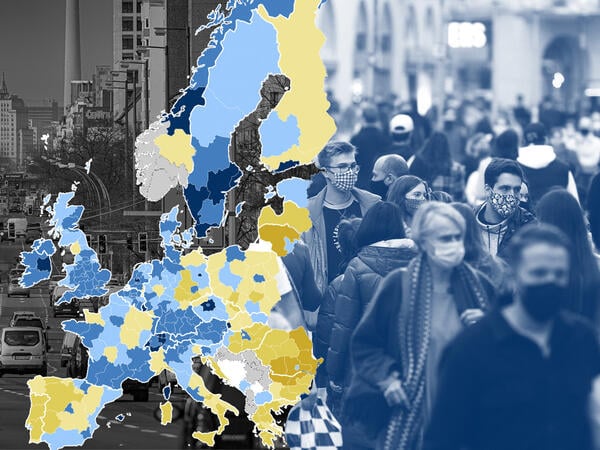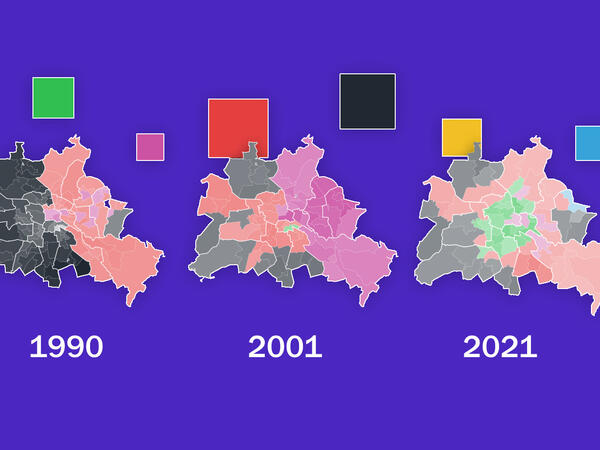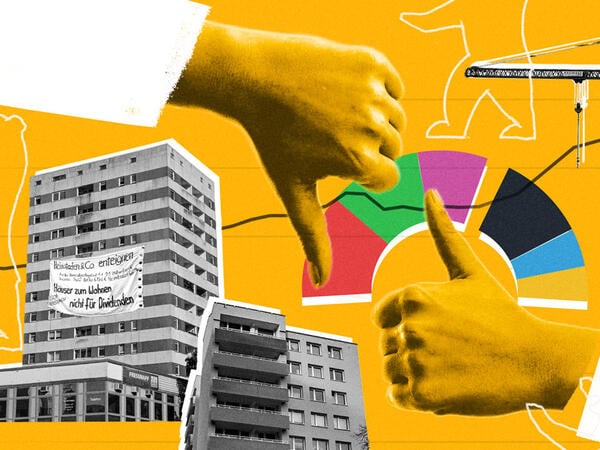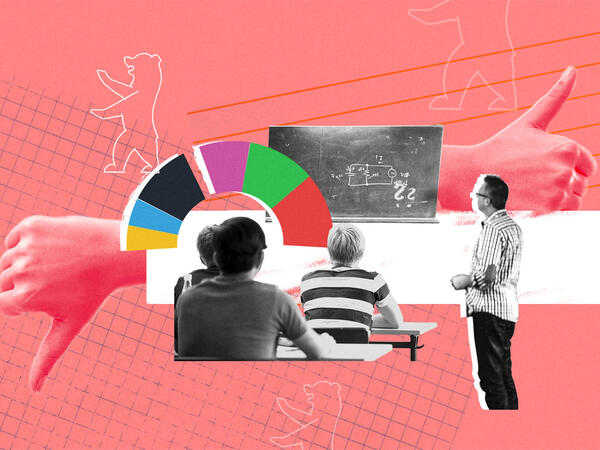Global health financing: Who decides which problems the WHO addresses?

It is an ambitious initiative the World Health Organization (WHO) is currently focused on. ‘Triple Billion Targets’ – a five-year strategy set for 2019-2023 – aims to provide better healthcare for one million people by the end of 2023.
This plan comes at a price. The WHO needs money to achieve its self-proclaimed goal: “the highest attainable standard of health as a fundamental right of every human being“. To do so is not easy, especially because the organisation cannot freely dispose of large parts of its budget. Data shows that it is mostly voluntary contributions that the organization receives.
Set up in 1948 to coordinate the UN system’s health affairs, the WHO was initially focused on malaria, tuberculosis, venereal diseases, and other communicable diseases. Now, over 8400 professionals from 160 countries work in 216 offices across the globe. In Western countries in the past years, the public perception of WHO’s work has mainly been shaped by the Covid-19 pandemic.
What kind of contributions does WHO receive?
The 194 member states of the WHO pay a certain amount to the WHO by obligation, proportionally calculated based on a country’s gross national product and its economic situation. Richer and highly stable countries pay the highest, poorer and destabilized countries pay lowest.
Germany, for instance, paid USD 63 million for 2016 and 17 and USD 58 million for 2022 and 2023. The US pays the most – USD 219 million for 2022 and 2023. Countries like Gambia and Bhutan pay the least – just about USD 9570 each for 2022 and 2023.
The WHO has autonomy over how it decides to use these contributions – it may choose to use this money to tackle the Ebola virus in Africa in one year or Malaria in Southeast Asia in the other, or for its own administration
But mandatory contributions are just a small part. Voluntary contributions pledged for 2022 and 2023 are five times higher than the mandatory contributions of WHO member states. Many countries and entities such as NGOs choose to provide more.
As the graphic shows, there are three types of contributions a country or organization can make. So-called core contributions can be used flexibly – WHO can decide how it pleases to use this extra fund to further fulfill its mandate. But if a so-called thematic contribution is received, the money needs to be spent on a specific topic or region. The WHO, however, can decide on the targets and methods.
Lastly, specified contributions are funds with least flexibility for the WHO. These funds have a specific use case and objectives. For instance, China may bilaterally agree with Ethiopia and pledge a certain amount towards increasing awareness around tuberculosis. However, instead of implementing the program itself, China may pass on the mandate to WHO with these pledged funds. These contributions form the largest chunk of voluntary contributions.
WHO has limited control on its total fund
This reveals an interesting fact. If one considers the funds for 2022 and 2023, the WHO has full autonomy over using only 17 percent of the funds it deals in (USD 957 million in mandatory contributions and USD 121 million in voluntary core contributions). 76 percent of the funds are almost fully controlled by contributors pledged under specified contributions. The remaining 7 percent are partly controlled by both as thematic contributions.
For 2020 and 2021, WHO decided over only 15.8 percent. It is therefore not WHO, but the contributors, mostly member states, that decide for most part which health issues to tackle. Individual countries set most of global health priorities.
In this case, the organization acts more like an international ‘secretariate’ or ‘agency’ that provides expertise to their member states. It can advise, urge, and mediate between members but cannot call the shots on issues. So WHO does not set the agenda for global health itself. The member states do that.
The United States pledge the most amount of voluntary funds – about USD 2460 million between 2016 and 2023. Almost all its contributions are specified with a major chunk now towards emergency response and providing universal health coverage.
It is followed by Bill and Melinda Gates foundation at USD 2445 million over 2016 to 2023. A major chunk of these funds go towards polio eradication and providing universal health coverage.
Third on the list is Germany with USD 1716 million in specified contributions and USD 260 million in thematic contributions over the same period. Maike Voss, managing director of the Berlin-based think tank Centre for Planetary Health Policy, says “Germany’s interest in global public health is to balance four pillars: to protect the German population’s health from a health security point of view; to maintain and strengthen the international health order; to advance its development policy and trade in health products; and lastly, to show its commitment towards ‘health for all’ as a human right.”
German specified contributions grew from USD 70 million in 2016 and 2017 to USD 953 million in 2020 and 2021. Voss adds “Health security is emerging as the dominant factor after the Covid-19 pandemic” and suggests that Germany now looks at global health funding strategically.The German government in the preceding years very actively pushed for global health to be on the international agenda via many multilateral forums: both for moral reasons and economic, like supporting its biomedical industry.
Is Germany keeping its major role in global health?
But overall, German voluntary contributions fell to USD 578 million in 2022 and 2023 from USD 1090 million in 2020-22. This is, however, not so suggest German’s withdrawal from the scene. It continues to fund as usual if not more in preparing countries to respond to health emergencies (USD 29 million), pandemic prevention (USD 55 million), detecting health emergencies (USD 37 million). It still provides USD 321 million in emergency response and continues to remain on top of its agenda.
While Covid is still an emergency in many parts of the world, there are other reasons to fund emergency response – those that are political. Voss explains that programs that are easier to track, communicate and report naturally attract more funds. It is easier to quantify the number of people Germany directly or indirectly funded vaccination for than to say it build a health system in (say) Uganda.
As a result, critically important programs – like strengthening workforce or health and policy research – remain underfunded. WHO finds itself in a tricky spot of asking money for what it thinks it will receive money for.
Diplomacy is also at play. Emergency response in some countries have also been increased bilaterally via German contributions. Nigeria, Turkey, Afghanistan, Pakistan and the Democratic Republic of Congo received the most specified contributions from Germany (at about USD 100 million in total in 2018 and 2019) channeled through the WHO. Germany, in fact, significantly expanded its bilateral assistance to many countries during the 2020 and 2021 Covid years. Take India, that jumped to USD 21 million in 2020-21 from only USD 11.4 thousand in 2018 and 2019.
The pandemic has demanded a reactionary effect from the world. 47 percent of all specified and thematic contributions for 2020 and 2021 (USD 2992 million) were pledged towards emergency response, especially to rapidly respond to acute health emergencies. This remains at 42 percent for 2022 and 2023 (USD 2233 million). Compare this to 2016 and 2017 when these voluntary contributions towards health emergencies were only 21 percent (USD 761 million).
Naturally, changing circumstances and limited resources have come at a loss of funding for certain initiatives like polio eradication. In 2016-17, the initiative was amongst the top funded at USD 1247 million. In the preceding biennium it dropped to USD 1083 million, then to USD 940 million and finally in 2022-23 at USD 767 million. Despite this drop, it continues to remain the third most funded initiative by VCS globally.
Looking into the future, WHO finds itself in gridlock. For years, it has requested for mandatory contributions to be increased for greater autonomy is using its budget. In an ideal world, expenditure on global public health is set by health priorities only. At present, however, political interests also play a role.







